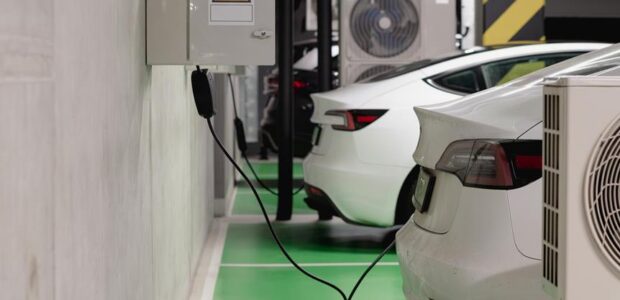
When you charge your electric vehicle (EV), electricity flows from a power source to the car's battery via the charging station, port, and cable. Different charging levels, like Level 1 and Level 3, determine the speed at which your battery recharges. This process is crucial for maximizing your EV's efficiency and maintaining a dependable charging network. Understanding the intricate components and functions of each charging station type is necessary for selecting the right fit based on your EV's capabilities and desired charging speed, ensuring a seamless charging experience tailored to your needs.
Charging Process Overview
The charging process overview provides a detailed look at how electric vehicles (EVs) are powered up to enhance performance and range. Charging an EV involves transferring electrical energy from a power source to the vehicle's battery to store for later use. The main components include the charging station, the vehicle's charging port, and the charging cable. The station supplies power to the vehicle through the port, which is connected via the cable. Some EV owners choose to install a home charging station for convenience, but this can come with additional costs. The home charging station cost can vary depending on the manufacturer and features, but it is an important investment for those who rely on their EV for daily transportation. However, public charging stations are also widely available for those who do not have access to a home charging station.
Charging can occur at various levels, with Level 1 using standard 120-volt outlets for slower charging and Level 3 utilizing rapid chargers for faster replenishment. Understanding this process is essential for optimizing your EV's performance and ensuring you have the necessary charging infrastructure available.
Types of Charging Stations
Pivoting from the charging process overview, understanding the types of charging stations available is essential for effectively powering up electric vehicles (EVs).
- Level 1: Uses standard 120-volt outlets, recharges at 2 to 5 miles of range per hour.
- Level 2: Utilizes 240-volt outlets, provides about 24 miles of range per hour.
- Level 3: Includes rapid chargers, DC fast chargers, and Tesla Superchargers, can reach 80% battery capacity in an hour.
- AC Charging: Levels 1 and 2 use alternating current for charging.
- DC Charging: Level 3 chargers use direct current for faster charging speeds.
Charging an EV: Steps and Considerations
Traversing the process of charging an electric vehicle (EV) involves a series of steps and factors to guarantee an efficient and reliable charging experience.
Begin by selecting the appropriate charging station type based on your EV's compatibility and desired charging speed. Connect your EV to the charging station using the correct connector – SAE J1772 for Level 2, CCS or CHAdeMO for Level 3, or Tesla's proprietary design. Ensure secure attachment to initiate the charging process.
Monitor the charging progress through the EV's dashboard or the charging station's display. Once charging is complete, safely disconnect the EV and stow away the charging cable. Remember to take into account factors like payment methods, charging speed, and convenience when choosing the right charging option for your EV.
Frequently Asked Questions
What Are the Common Safety Precautions When Charging an EV?
When charging an EV, always follow safety precautions like inspecting cables for damage, using UL-listed equipment, avoiding water exposure, and not overloading outlets. Remember to unplug after charging, and consult your vehicle's manual for specific guidelines.
Can I Use a Regular Extension Cord for Level 1 Charging?
Yes, you can utilize a regular extension cord for Level 1 charging, but make sure it's rated for continuous use and high power. Opt for a heavy-duty cord to prevent overheating and voltage drop, promoting safe and efficient charging.
How Do I Find Public Level 2 or Level 3 Charging Stations?
To locate public Level 2 or Level 3 charging stations, utilize EV charging apps like PlugShare or ChargePoint. You can filter by connector type, availability, and payment options. Confirm your EV is compatible before heading to a station.
Are There Any Special Maintenance Requirements for EV Chargers?
For EV chargers, routine maintenance like cleaning connectors and checking cables is essential. Monitor for wear, corrosion, or loose parts. Follow manufacturer guidelines for upkeep. Regular inspection guarantees peak performance and longevity of your charging station.
Can I Charge an EV in Extreme Weather Conditions?
In extreme weather, charging an EV may be slower due to battery performance sensitivity. Level 3 chargers are more resilient. Guarantee proper insulation and cooling for best results. Monitor charging speeds and adapt as needed.
